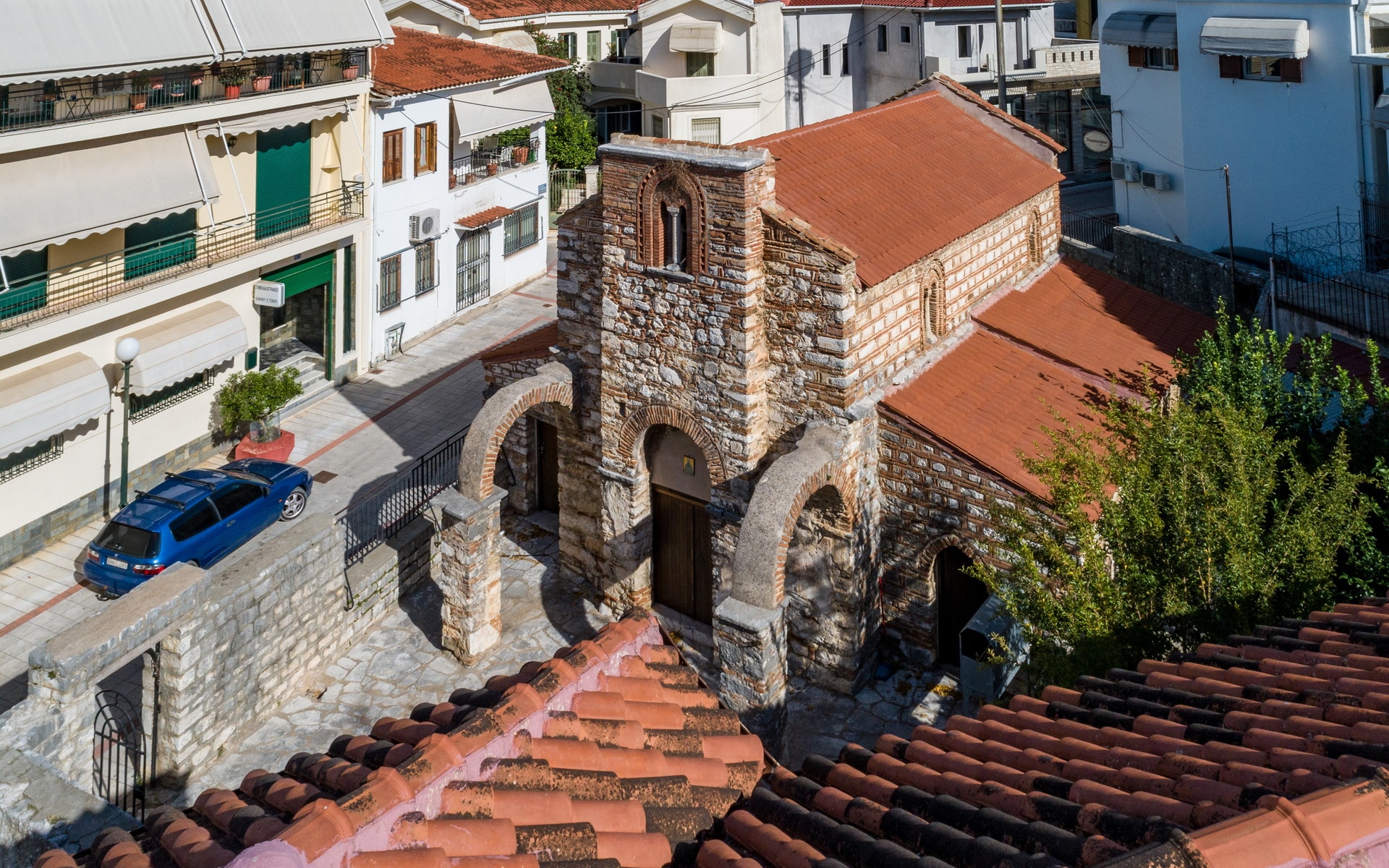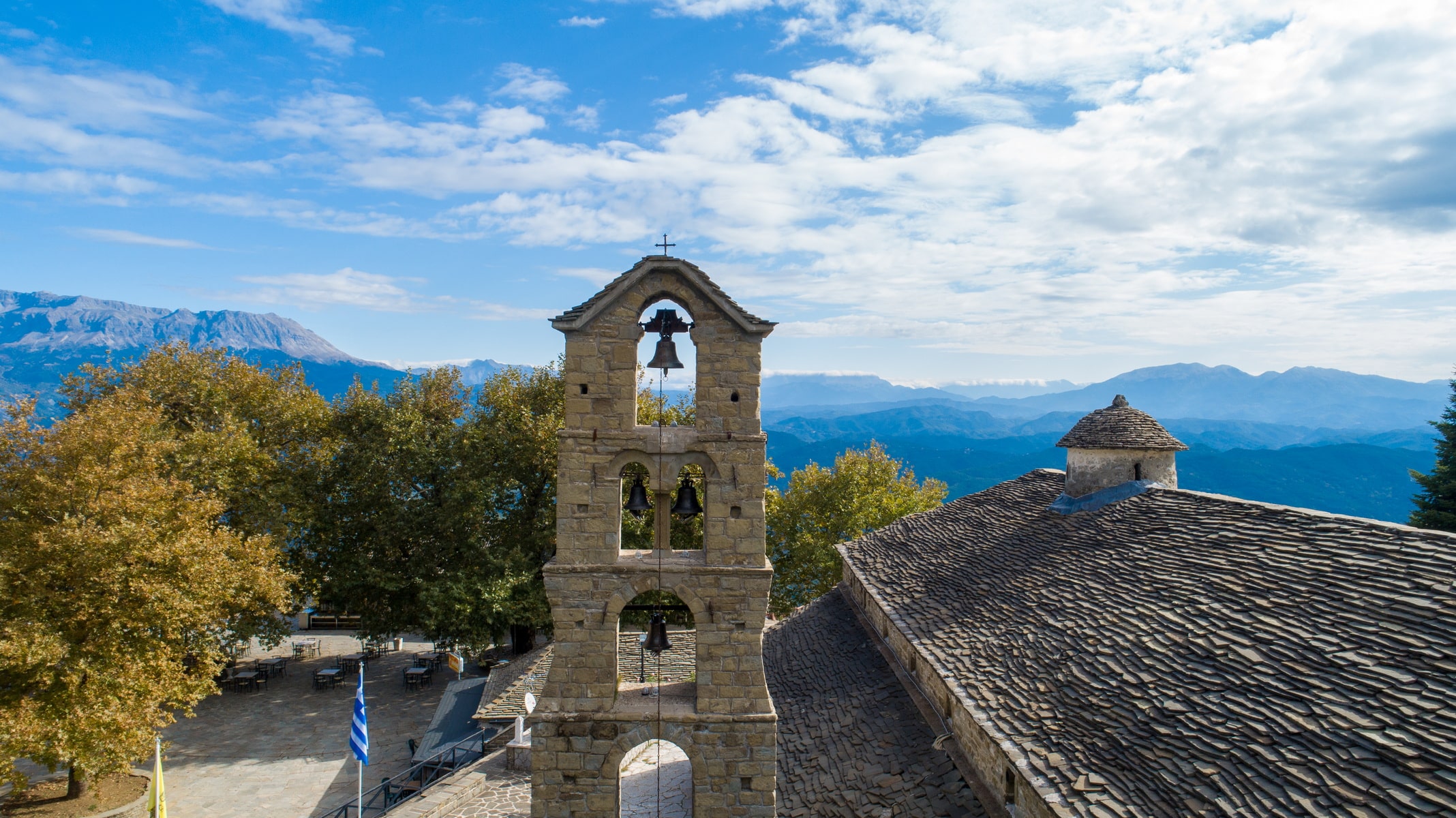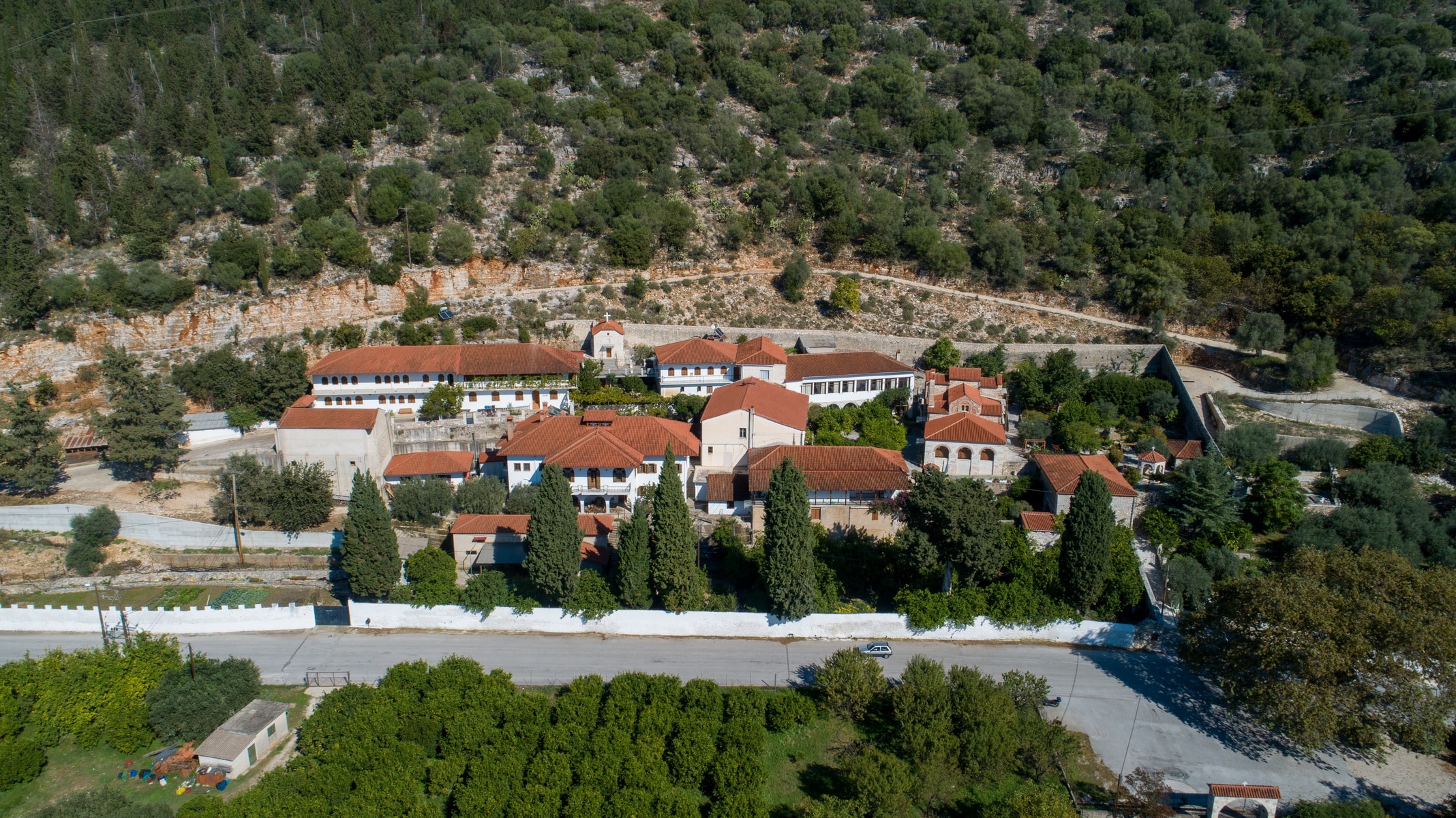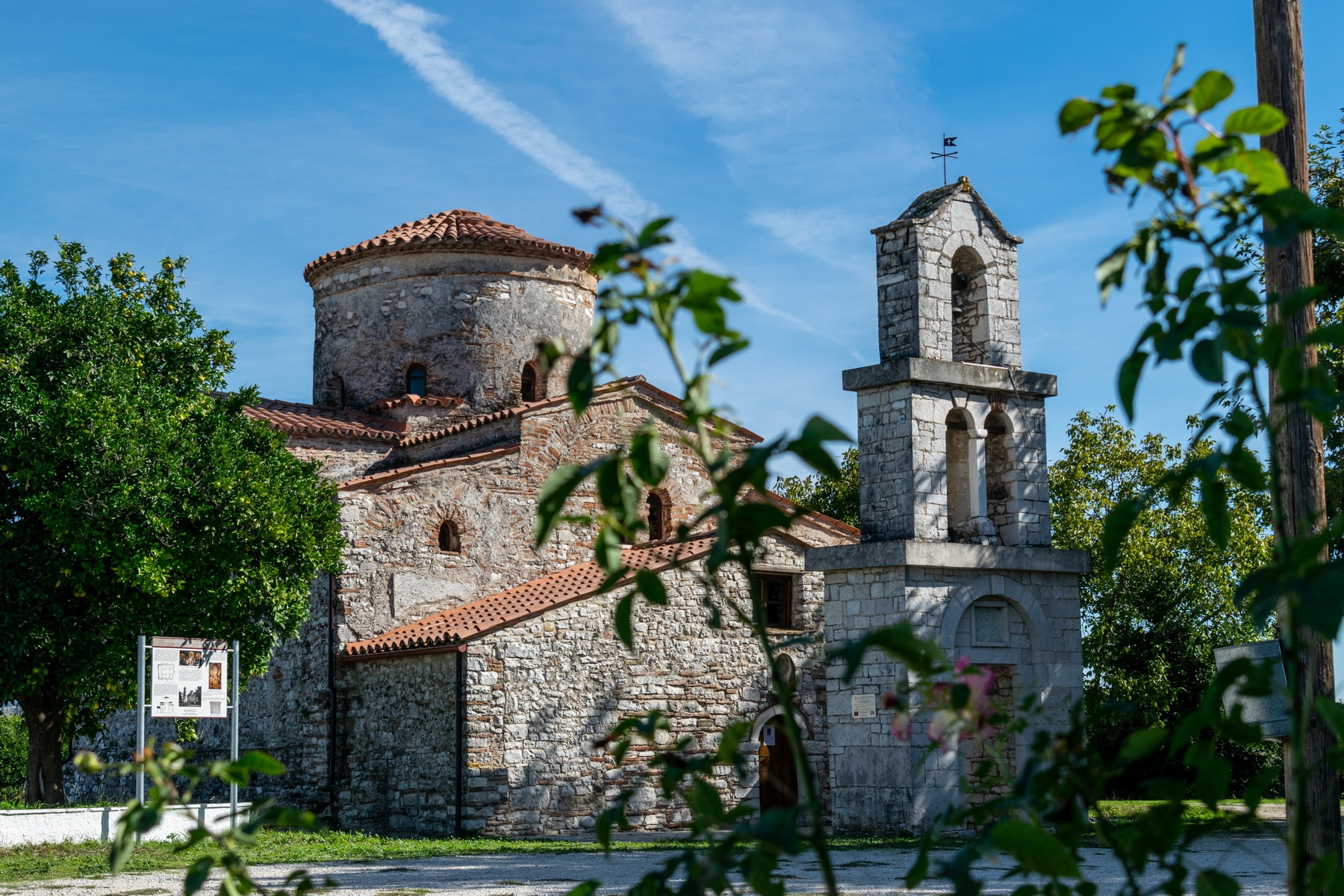The church of Agia Theodora is located in the center of Arta, at the shortcut of Vassileos Pyrrou Street. The area used to be the bustling center of the Byzantine capital, in the lower city district.
It is one of Arta’s most important monuments, not only for its morphology but mainly because this church is like a living connection of the present city with its Byzantine past since it is dedicated to its queen, the city’s Saint Theodora. The church has a special emotional bond for the people of Arta, connecting them to their past as a secret link, an inner communication with the creators, the Despotate’s people, and its symbols. This connection becomes apparent to the visitor as the monument opens an imaginary window to the greatness of the Despotate.
Written reports-studies: Written testimonies about the temple during the Byzantine period come from the monk Job Melias (13th century), a contemporary of the ruler Michael II Komnenos Doukas and biographer of Saint Theodora, the despot’s wife. The monument again is referred to in textual 17th-century testimonies by the Turkish traveler Evliya Celebi, who reports that the church had such an abundance of dedications from all over Francia, that the Turkish authorities collected money for protection. Two hundred priests served in the church and offered food and shelter to passers-by.
The church was systematically studied and published by Anastasios Orlandos in 1936, while an extensive study by G. Millet had preceded it. G. Lampakis and the Archimandrite Antonios, who made the first sketches at the end of the 19th century, had previously studied the monument.
History and dating: The church’s construction dates back to the mid-Byzantine years before the founding of the Despotate. It was the monastery’s katholikon (central church building) dedicated to Saint George. It dates back to the middle of the 12th century or, according to others, to the end of the 11th. It is built on the ancient Amvrakia’s rectorate as a recent (2019) excavation of the Ephorate of Antiquities revealed. It was a women’s monastic community. Queen Theodora lived in the monastery during the last years of her life, after first becoming a nun and renovating the katholikon that was dedicated to her memory after she was canonized. Today, the church is dedicated to St. Theodora, the patron saint of Arta, celebrated on the 11th of March.
A few words about the life of Saint Theodora: Theodora was the wife of Despot Michael II Komnenos Duke, the illegitimate son of the founder of the Despotate of Epirus Michael I Komnenos, from the Angelos family. She was the daughter of the sevastokrator Ioannis Petraleifas, of Norman-Italian descent. Her family was one of the Hellenized branches of the descendants of Peter, son or brother of the lord Alifa, in Caserta, Italy, who settled in Byzantine territory, fighting on the side of the emperor Alexios I Komnenos. Michael II met her in Serbia, where she lived with her family. According to her biographer, Theodora was exiled a few years after her marriage because the ruler became interested in another woman, a noblewoman from Arta, and generally led a dissolute lifestyle. Unable to tolerate her husband’s behavior, she wandered in the countryside, where she lived in absolute poverty. According to her biographer, she was found by a priest in a state of absolute poverty, gathering potherbs. He revealed her identity to him, who took her under his protection in Prenista village (today Korfovouni of Arta), where he was a priest. After five years of exile and under pressure the people of Arta exerted on the ruler, Theodora was restored. Arta’s inhabitants, with the support of the nobles, revolted against Michael II, outraged by the disorderly life he led and his behavior towards his wife. The despot brought Theodora back to her royal position and founded the monastery of Kato Panagia and Panagia Pantanassa, near Filippiada, as a sign of sincere repentance.
Theodora Petraleifa was an important personality and played a crucial role in the political affairs of the Despotate. She made a significant contribution to signing the peace treaty of the Despotate of Epirus with the Empire of Nicaea. Under the pretext of her son Nikiforos’ marriage with the daughter of Theodore II Laskaris, Emperor of Nicaea, she visited the city twice, leading the negotiations and achieving the peaceful coexistence of two traditional enemies for a short period.
The witty Theodora went down in history for her philanthropic work. She became a nun after her husband’s death and retired to the monastery of St. George until the end of her life. When she died, she was buried in the monastery’s katholikon, which was later dedicated to her name. The inhabitants never ceased being associated with her and declared her the city’s patron saint.
Architecture:
Phase A: The Katholikon is a typical wooden-roofed basilica and belongs to the first construction phase of the monument. Its eastern wall ends in three broad, three-sided arches. The three-part sanctuary has two transverse walls with door openings that separate the Chancel from the Prothesis and the deaconry. In the interior, the main church is divided into three aisles defined by colonnades. The central aisle stands higher than the side aisles and is housed with a pitched roof. The side aisles have single-pitched roofs and eight bifora windows.
Two more construction phases follow.
Phase B: The most basic phase dates back to the glorious period of the Despotate around 1270, when Queen Theodora renovated the church. It was then that the three-part vaulted narthex was added to the west. There is a low dome in the roof’s center. It has three entrances, west north and south, and three inner gate openings to communicate with the main temple. Today, the southern opening is blocked by the tomb of St. Theodora. Three pediments are formed on the exterior west side. The central one has a bifora window and rises in front of the low dome. This peculiarity is also observed in the katholikon of the monastery of Vlacherna, which dates back to the same period.
The addition of two large, pointed pediments to the east and west walls of the central aisle probably belongs to the same construction phase. The pediments project above the roof level and each has a bifora window.
The pointed gate, located a short distance south of the church with the characteristic, rich ceramic decoration of the period, is also a work of the 13th-century.
Phase C: The next and last phase dates back to the end of the 13th and the beginning of the 14th century. It includes the addition of an open entrance, in the shape of a Π, surrounding the west side of the narthex and parts of the north and south sides of the katholikon. Today, only the southwest corner and its south side (supported by pillars) survive.
The 2019 excavation revealed several elements of the gallery and the temple’s surrounding area.
Masonry-exterior decoration: The masonry of the temple consists of irregular stones with bricks placed in between in a horizontal, irregular arrangement. In contrast to the simple walls of the katholikon, indicative of its early dating, the high pediments of the central aisle present an intense ceramic decoration that fills the masonry and surrounds the bifora windows. Jagged decorative bands, successive plinths, and adornments made of broken vessels are some examples of this dense embellishment. Many zones of ceramic decoration also surround the masonry of the narthex, dated at the same time (13th century). Some are bands with crosses, suns and meanders, zigzag lines, and lattice patterns.








